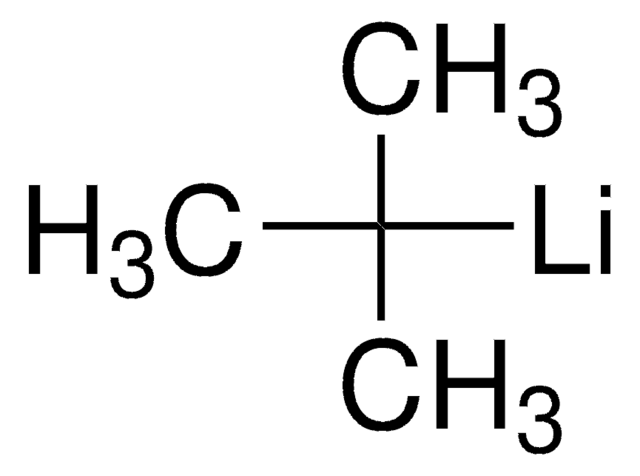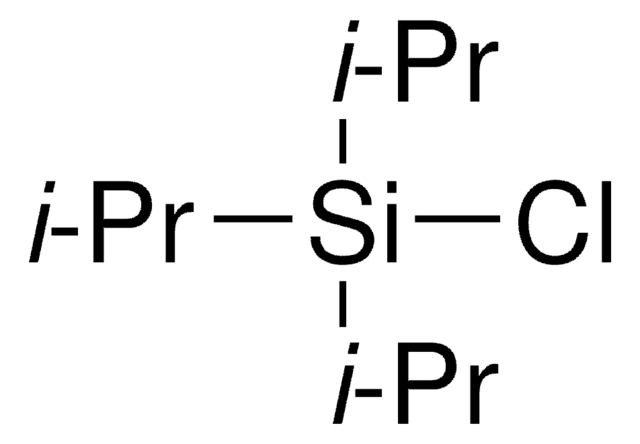186198
tert-Butyllithium solution
1.7 M in pentane
Synonyme(s) :
Lithium-2-methyl-2-propanide, t-BuLi
About This Item
Produits recommandés
Densité de vapeur
~3 (vs air)
Niveau de qualité
Forme
liquid
Concentration
1.7 M in pentane
Densité
0.652 g/mL at 25 °C
Température de stockage
2-8°C
Chaîne SMILES
[Li]C(C)(C)C
InChI
1S/C4H9.Li/c1-4(2)3;/h1-3H3;
Clé InChI
BKDLGMUIXWPYGD-UHFFFAOYSA-N
Vous recherchez des produits similaires ? Visite Guide de comparaison des produits
Catégories apparentées
Description générale
Application
- Alkyllithium derivatives form alkyl iodides and diiodoalkanes by halogen-lithium exchange reaction.
- Inorganic polymer [(LiMo3Se3)n] from [(InMo3Se3)n] by reductive intercalation method.
- Adducts of cinnamic acid (1,3- and 1,4-adducts) by reacting with C-C double of cinnamic acid.
Conditionnement
Informations légales
Mention d'avertissement
Danger
Mentions de danger
Classification des risques
Aquatic Chronic 2 - Asp. Tox. 1 - Eye Dam. 1 - Flam. Liq. 2 - Pyr. Liq. 1 - Skin Corr. 1B - STOT SE 3 - Water-react 1
Organes cibles
Central nervous system
Code de la classe de stockage
4.2 - Pyrophoric and self-heating hazardous materials
Classe de danger pour l'eau (WGK)
WGK 2
Point d'éclair (°F)
-56.2 °F - closed cup
Point d'éclair (°C)
-49 °C - closed cup
Faites votre choix parmi les versions les plus récentes :
Déjà en possession de ce produit ?
Retrouvez la documentation relative aux produits que vous avez récemment achetés dans la Bibliothèque de documents.
Les clients ont également consulté
Notre équipe de scientifiques dispose d'une expérience dans tous les secteurs de la recherche, notamment en sciences de la vie, science des matériaux, synthèse chimique, chromatographie, analyse et dans de nombreux autres domaines..
Contacter notre Service technique













